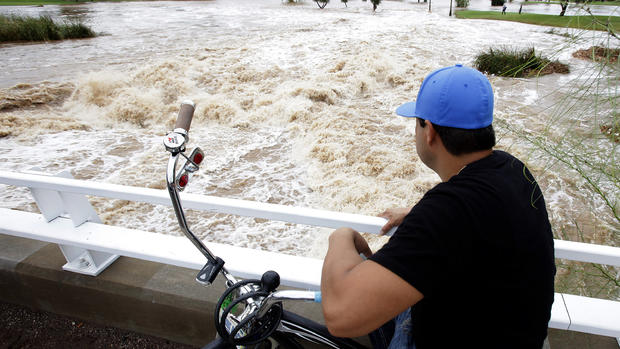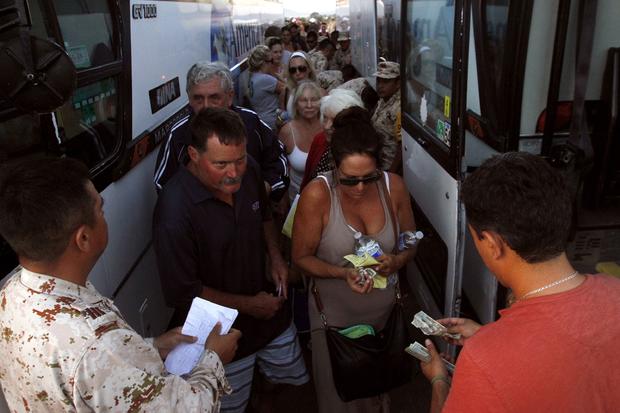Remnants of TS Odile moving through U.S. Southwest
LOS ANGELES - As Southern California cleaned up from damaging downpours and flash floods, forecasters warned Wednesday that more could be on the way as hot weather lingering over the region continues to collide with moist air from the remnants of Mexico's Tropical Storm Odile.
Forecasters posted flash flood watches for mountains and deserts from north of Los Angeles through inland counties to the east and south to the U.S.-Mexico border. They also warned that any thunderstorms that develop will likely be heavy and slow-moving, producing as much as an inch of rain an hour.
"Any cells that do form, people need to keep an eye on them to make sure they don't get caught in a potential flash flood," National Weather Service forecaster Michael Watkins said. "Turn around. Don't drown."
The weather system is the last gasp of former Hurricane Odile, which battered Mexico's Baja California peninsula.
In Mexico, residents of the resort state of Baja California Sur struggled with a lack of power and drinking water and formed long lines for emergency supplies. There were scattered reports of looting. Tourists, meanwhile, were ferried on military and commercial planes through the Los Cabos international airport, which remained closed to commercial flights due to damage suffered when Odile tore through the area late Sunday and Monday.
CBS News correspondent Carter Evans reports that Arizona has already seen its fair share of severe weather this season. Last week, the remnants of another powerful Pacific storm - Norbert - caused record flooding.
"I don't need more rain. When I heard there was more rain coming in, I panicked -- horrible," one Arizona woman said.
Tuesday's raging thunderstorms caused numerous problems in the San Diego and inland regions of Southern California.
Trees smashed several cars and trucks and hit the front of a school bus in Spring Valley but nobody was hurt, authorities said. In San Diego, Montgomery Field airport reported that high winds flipped over several small planes, Watkins said.
In Los Angeles, as many as 6,000 homes and businesses lost power at one point Tuesday, and about 600 customers in the San Fernando Valley were still without power Wednesday. Officials said those outages were caused mainly by high energy use, which caused system failures in some areas.
With temperatures topping 100 degrees across much of the city Tuesday, the Los Angeles Department of Water and Power reported an all-time record demand for electricity.
The high of 103 downtown matched records set in 1909 and 1889, the Weather Service reported.
In the San Diego area, El Cajon's 104 topped the previous high of 102 from 2000, while Chula Vista recorded a 98 - 10 degrees hotter than the previous record set in 1979.
Utility officials urged people to set their thermostats at 78 degrees Wednesday and avoid using major appliances until the evening. Those who can't take the heat were advised to visit one of several cooling centers the city is opening.
National Weather Service specialist Stuart Seto said the region will begin getting a slight break in the heat as a strong sea breeze begins to arrive from the Pacific Ocean.
Temperatures in the Los Angeles region were expected to be 5 degrees cooler Wednesday, which still puts them near the 100-degree mark. tThey are expected to drop another 10 degrees Thursday as a low-pressure front brings more cool air and cloud cover to the area.
"All those conditions combined should cool us off pretty good," Seto said.
But the cool-down is expected to be short-lived. The Weather Service forecasts more heat next week.

